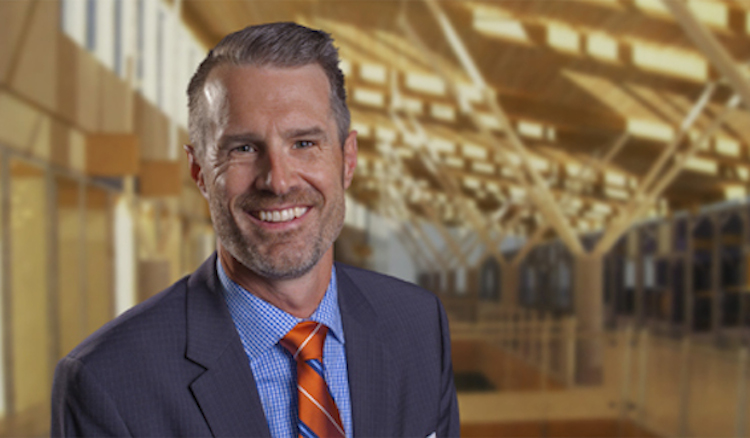Is Athabasca University, long the redheaded stepchild of Alberta’s universities, about to have its Cinderella moment?
After years of financial insecurity and deep angst about a mission seemingly made redundant by the internet that sometimes gave the impression of an existential crisis about to go critical, there are signs the future of Athabasca U is suddenly assured.
Recent events suggest the planets are coming into alignment for the 50-year-old distance education university nominally based in the town of Athabasca, 150 kilometres north of Edmonton.
That would be a development that would not be particularly welcome to Alberta’s two top-tier research universities in Calgary and Edmonton or second-tier public institutions like MacEwan, Mount Royal and Lethbridge universities, all of which now have financial challenges of their own.
The emergence on Friday of AU president Neil Fassina as a poster boy for Advanced Education Minister Demetrios Nicolaides’ 10-year plan to transform Alberta’s post-secondary system certainly suggests something may be afoot. It also likely doesn’t hurt that Fassina is chair of the Council of Post-Secondary Presidents of Alberta, and therefore the voice for all 26 presidents whose institutions are under the microscope, whatever reservations they may have.
Fassina is a former Northern Alberta Institute of Technology vice-president academic hired in 2016 to implement big plans to restore distance-education lustre to an institution that seemed to have lost its shine in a digital age when pretty well anyone could open classes over the internet.
Add to this the election of Jason Kenney as Alberta premier, a former federal immigration minister and college dropout who resents and distrusts traditional post-secondary institutions and has big plans to slash the cost of post-secondary education.
Toss in a global pandemic that may hinder international travel for years, and you have a set of circumstances that could see AU emerge as the Alberta government’s favoured university — whence by dint of geography and a student body scattered to the four winds there will never be a protest march to the steps of the legislature!
In addition, Alberta’s traditionally structured universities were banking on foreign students with plenty of cash for high fees to keep them afloat in the brutal austerity everyone expects from the Kenney government.
But that was before the global coronavirus pandemic, ending easy international travel for the time being, keeping foreign students at home, and doubtless creating panic in the finance offices of most Canadian universities.
The exception is AU. Its traditional mission and technology means it can recruit students anywhere. And, suddenly, foreign students who might have looked down their noses at AU may see it as a way to get Canadian credentials without the risk or hassle of international travel.
This plays to Premier Kenney’s notions about immigration, too, fostered from his time as Stephen Harper’s citizenship and immigration minister.
Athabasca U is now positioned to tell potential students they can get the credentials they need immigrate to Canada and work here without the expense and inconvenience of having to study here first. And if Kenney still harbours prime ministerial ambitions, he can try to sell that later as a success for Canada.
AU already has the lowest cost per student of any Alberta university — naturally, because with no students in residence it has little need for physical infrastructure. So Kenney’s crowd, devoted to austerity and suspicious of universities anyway, has got to like that.
Not only does AU make money with every registration, the model is fully scalable and costs won’t go up much if it keeps adding students.
On the downside, without the supports of a normal campus, it’s got a high dropout rate — but who says that matters to the UCP as long as the institution is making money?
The biggest fly in the ointment may be the significant chance of a labour dispute when bargaining for a new collective agreement resumes, with Fassina’s administration trying to carve two thirds of the Athabasca University Faculty Association out of its bargaining unit. The AUFA contract expired in June.
Labour relations between the administration and the association are testy enough that trying to negotiate by “strategic flinch,” an idea described by Fassina in a 2013 paper that sounds a lot like having a tantrum at the bargaining table, probably won’t work this time.
Just the same, when McKinsey & Co., starts its speedy analysis of how to fix Alberta’s post-secondary system whether it needs it or not, something tells me Nicolaides’ American consultants will look with favour on AU and Fassina’s plans.
Editor’s note, June 16, 2020: A previous version of this story incorrectly stated that Neil Fassina was formerly president of Northern Alberta Institute of Technology. In fact, he was vice-president academic. The story has been corrected.
David Climenhaga, author of the Alberta Diary blog, is a journalist, author, journalism teacher, poet and trade union communicator who has worked in senior writing and editing positions at The Globe and Mail and the Calgary Herald. This post also appears on his blog, AlbertaPolitics.ca.
Image: David J. Climenhaga




